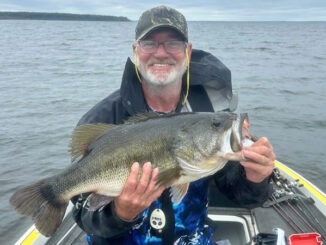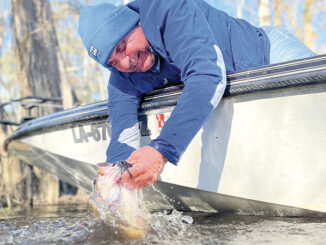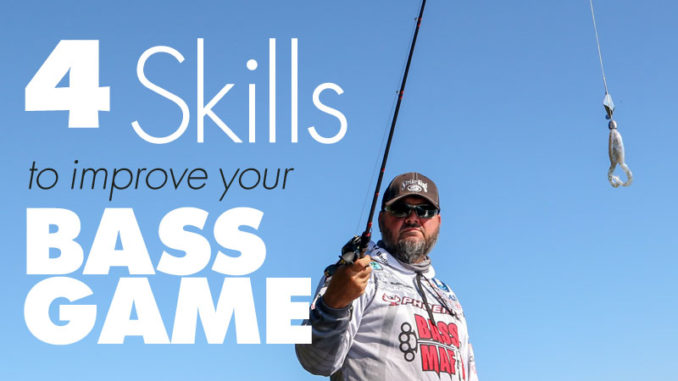
Most agree that angling success increases with experience; but there’s also no denying the impact of mastering the mechanics. Here’s a roundup of bass fishing skills that can help improve your game.
#1 Cool spooling
Spooling reels is one of the most common angling maintenance tasks, but it’s one that can easily go awry, particularly if you don’t manage the filler spool. Some hold the spool between their feet to keep it from flopping around and risking a pile of loose line. Another option puts the spool in a plastic tub, like a food storage container, or even a hotel room’s ice bucket. In either case, loosely containing the spool allows it to spin freely without becoming unruly.
Lastly, consider the benefit of holding the filler spool in one hand, gripping the rod butt with your knees and reeling with the other hand. This keeps pressure on the spool, while ensuring even distribution across your reel.
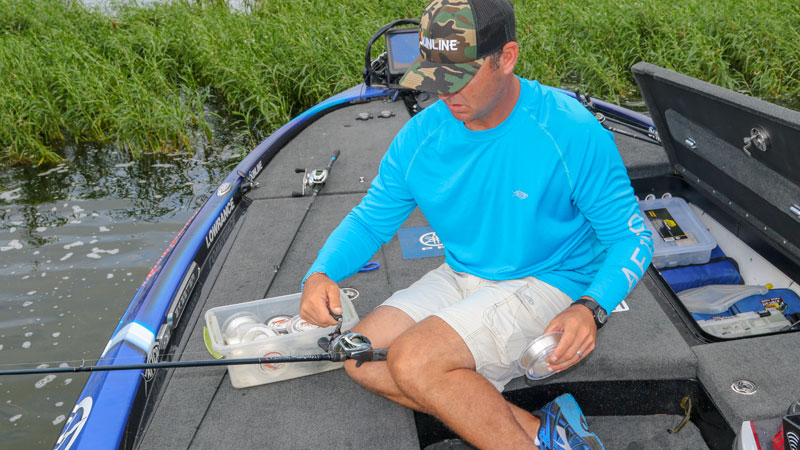
#2 Eliminate clutter
Nothing is more frustrating than wasting time and possibly missing opportunities by fidgeting with hook packages. A better option — slide several hooks onto a safety pin for quicker access and secure storage. Group hooks by the sizes and styles you commonly use and keep each set in a tackle tray slot.
Similarly, an efficient way to keep several packages of soft plastics on standby is to group them on a D-ring or metal shower curtain ring. Easily opened, but holding securely, these binders eliminate the disorganized clutter of multiple packages tossed on a deck or console.
Lastly, reaching for small terminal tackle like swivels, split-shots and drop-shot weights can be a burden when your fingertips are too big to retrieve these items. Solution: Cut square/rectangular pieces of high density foam (think yoga mat) and place them in tackle tray slots to raise your smaller tackle for easier reach.
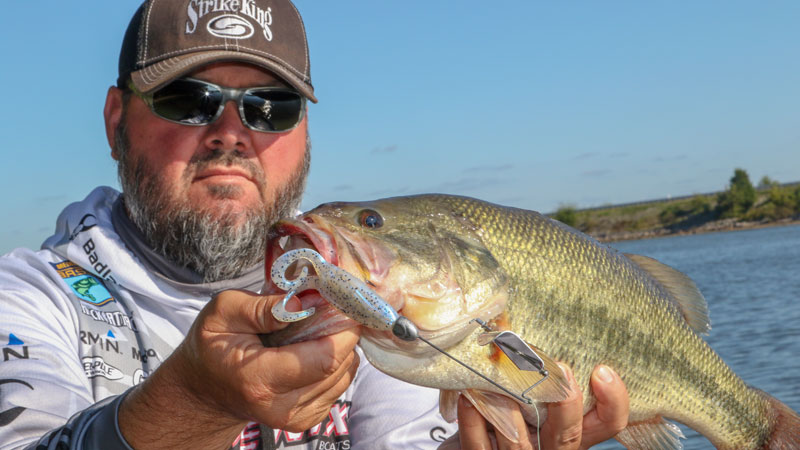
#3 Big rod = Big cast
“Keep the wind at your back.” We hear that a lot, and it’s not wrong, but it’s not the only consideration for lengthy casts. It can be a complicated topic, but pro Greg Hackney offered a few nuggets for consideration.
- Go with the biggest rod you can handle, but make sure stiffness increases with lure weight.
- Allow a sufficient length of line off your rod tip — enough to facilitate the loading action, but not so much that you risk hooking yourself, the console or your fishing partner on the backcast. Generally, as rod length increases, line off the rod tip should also increase.
- Also, consider that a smaller spool spins faster than a larger one to release the same amount of line. That means braking a spool at the end of a long cast can yield a nasty friction burn with a small spool.
- As far as form, a snappy overhead cast is not necessarily best for long casts. Instead, learn to deliver a lobbing, sidearm cast.
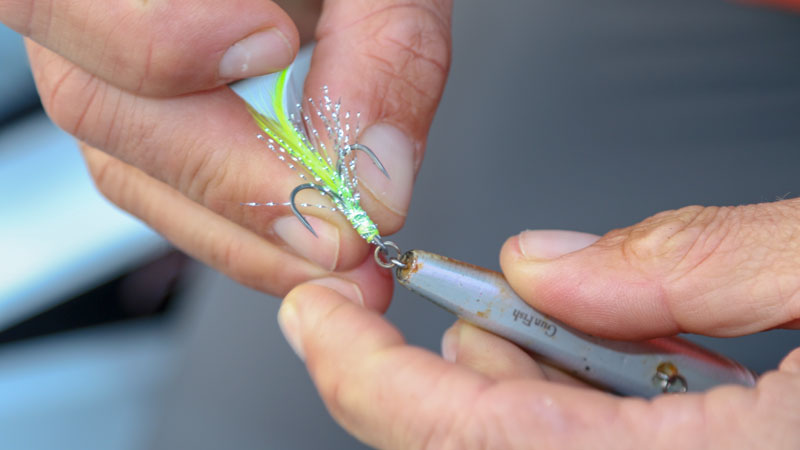
#4 Lure detour
Crankbaits, jerkbaits and topwaters are designed to work right out of the package, but key hook changes can favorably affect a lure’s action. Consider these options:
Sink rate: Jerkbait success often depends on getting the bait to move through the water column just right. Well, if you have a bait profile/color the fish like, but you need it to sink a little faster — or maybe you want to convert a suspending bait into a slow sinker — increase your hook size. Two hooks of the same size keeps the bait level, but increasing only the front size creates a nose-down posture that might earn you a little more attention.
Action: Upsizing crankbait hooks adds more mass and weight, which can slow a bait and deaden its action. This can prove helpful in colder weather when the fish may like a certain profile, but shy away from too much action.
Feathered treble: A “dressed” treble adds lifelike action to the back end of a topwater walker or popper, as the feather contracts and expands with your cadence. Feathers can also add drag and slow a bait’s forward motion. When a fish comes up and pushes water behind the bait, that feather can hold it in the strike zone a second longer so the fish gets a clean connection.
